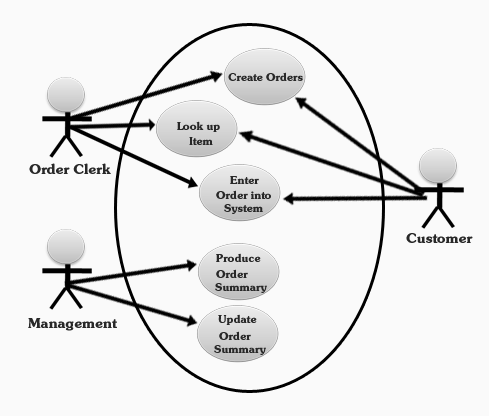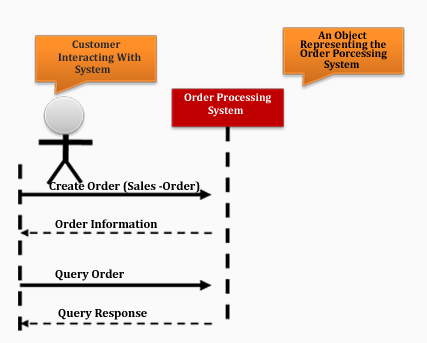|
|
||
|
Industries |
||
|
Information Models and UML – A Short Tutorial |
||
|
Information models are
used commonly to capture the flow of information between
different components of a system. Instead of one view, these
models present different views so that different types and
levels of details can be understood by the analysts.
Example: Order Processing Use Case This use case shows the main activities (circles) performed within an order processing system. It also shows how the three main users (customers, managers, an order clerk) interact with these activities.
This class diagram shows the main classes (objects) in the order processing system (i.e., Sales Marketing-Sales Department, Customer, Service Department). For each class, it shows the attributes (e.g., name, address) and the methods (operations) performed.
Example: Order Processing SSD This SSD (system sequence diagram) displays the sequence of interactions between the customer and the order processing system. The arrows show the sequence (top to bottom). For example, create an order is the first interaction generated by the customer and query response is the last interaction generated by the order processing system.
References: §
OMG website (www.omg.org)
|
||




